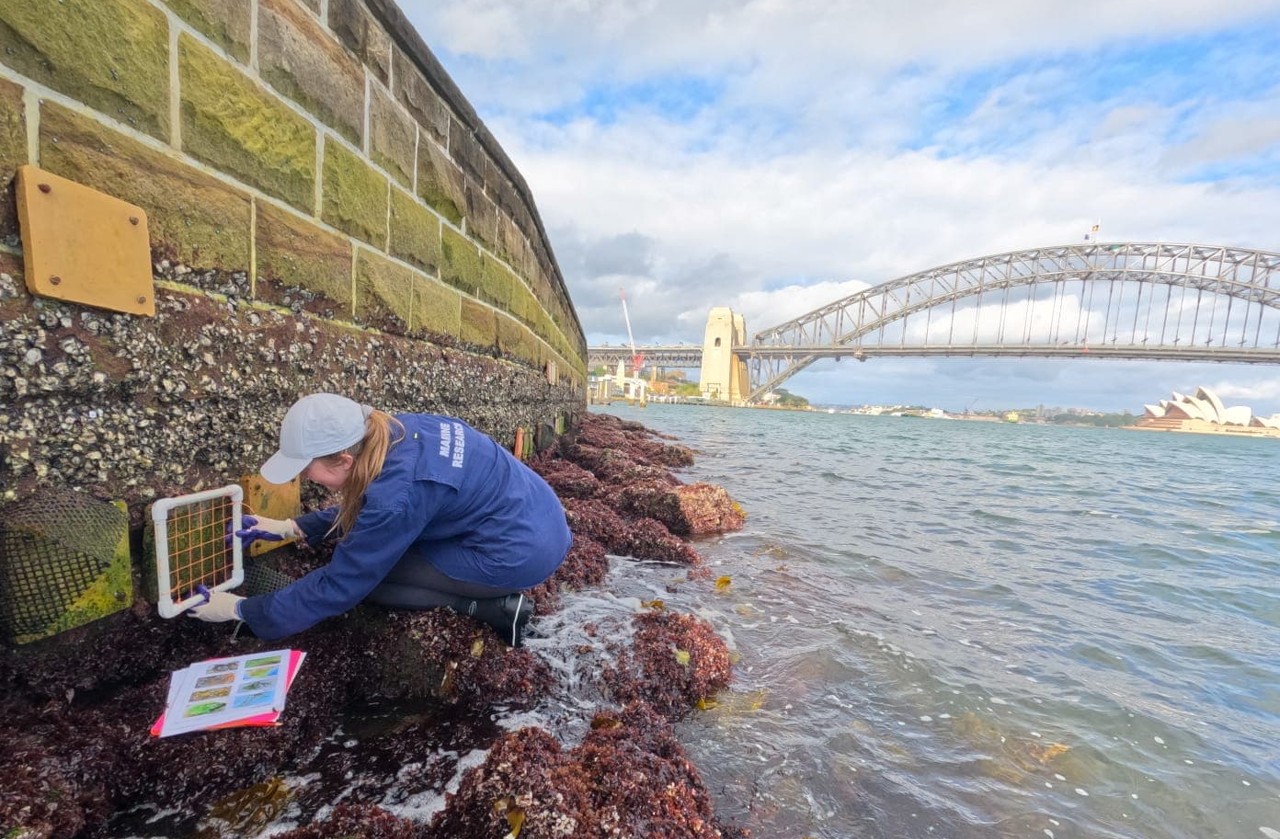Media release
From:
True colours: how red, green and yellow concrete can improve Sydney marine life
When marine scientists gave Sydney Harbour seawalls a colourful glow up, they discovered it boosted marine biodiversity along our increasingly urbanised, concrete-dominated shorelines.
A new study published in the Journal of Applied Ecology by researchers from Macquarie University and the Sydney Institute of Marine Science has found the colour of concrete can significantly affect which marine organisms make their homes in urban seawalls.
Their findings suggest a simple, low-cost design tweak – adding colour – could help revive marine life along concrete-dominated coastlines.
Most marine infrastructure is made from plain grey concrete which is strong, cheap, and durable, but visually uniform and biologically unfamiliar. Natural shorelines, by contrast, feature a rich palette of colours that can influence how marine species interact with their environment.
"Many marine animals respond to light and colour when choosing a place to settle," says senior author Dr Laura Ryan, from Macquarie University's School of Natural Sciences. "So we asked: if we make concrete more colourful, can we improve marine biodiversity?"
To test this, the team created coloured concrete panels — red, yellow, green, and standard grey — and attached them to seawalls around Sydney Harbour. Over 12 months they tracked which organisms settled on each panel.
They found marine invertebrates and seaweeds colonised panels differently depending on the panel colour. Red panels in particular supported communities distinct from other coloured panels, attracting higher numbers of green algae and barnacles.
"We were surprised that even after the panels were fully covered in marine growth, the original colour continued to influence which species were present," says first author Holly Cunningham.
"Incorporating colour into marine design is practical, affordable, and easy to scale," says supervising author Professor Melanie Bishop, co-leader of the Living Seawalls project.
Read an extended version of this article on The Lighthouse – Macquarie University’s multi-media publishing platform – please credit when republishing.:
https://lighthouse.mq.edu.au/article/july-2025/living-colour-how-red,-green-and-yellow-concrete-improves-marine-life




 Australia; NSW
Australia; NSW


